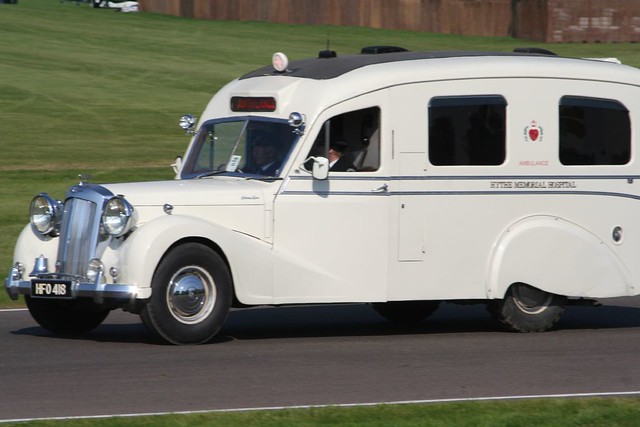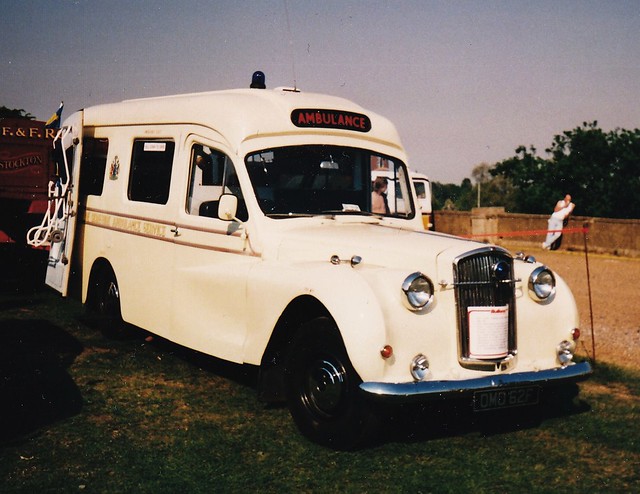... or the A135 Vanden Plas:
It could also be a Daimler:
But we were thinking of an Austin, speeding from Somerset House to St. Bartholomew's.
Дэвенпорт-Коулз объяснил, что мне предстоит пройти обследование за пределами Сомерсет-Хауса, совсем недалеко, в больнице Сент-Бартоломью. И, если я не возражаю, анестезию сделают по дороге, это сэкономит время.
Белая карета "Скорой помощи" ждала у подъезда – очень импозантная карета, размером чуть меньше автобуса. Анестезиолог с ассистентом без промедления принялись за дело: «Снимите пиджак, галстук, рубашку. Ложитесь... Так, пульс в норме. Сейчас вам сделают укол, это совсем не больно». Я еще успел почувствовать, как машина трогается с места, а потом – чернота. Полный провал.
Images: bossmustanguk (1), Ledlon89 (2) , Taxi nerd on Flickr (3)


















